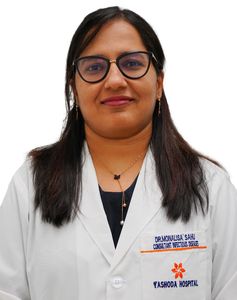Infections and infectious diseases are a major burden to our society.
Several microorganisms—from bacteria to viruses to fungi and parasites—are causative agents of these infectious diseases. Certain diseases are endemic to particular regions; others lead to an epidemic, affecting a large number of people during a certain period of time in a particular geographical area; and a few infectious diseases take the form of the pandemic, affecting several continents simultaneously, like Covid-19. There are several other agents, known as vectors, which serve as the means of spreading the pathogenic organisms among human beings and animals.
To keep oneself protected from these diseases, one needs to have a clear idea about the various common infections prevailing in that area or region, more so during different times of the year.
For example, during monsoons, one needs to be aware of infectious diseases during that time, like malaria, dengue, scrub typhus, leptospirosis; the agents causing the disease, their mode of acquisition, the disease manifestations, signs and symptoms so that they can suspect the disease early in its course, before the onset of complications and approach the health care facilities for timely management.
They should also be aware of the measures to be taken to prevent the transmission of diseases and break the chain of disease transmission, like maintaining environmental cleanliness to protect against dengue, malaria, chikungunya; avoiding consumption of contaminated food and water to protect from diarrhoeal diseases, dysentery, typhoid; maintaining hygiene to protect against bacterial and fungal infections of the skin; following proper hand-washing and cough etiquettes to protect from respiratory illnesses like influenza, Covid-19 and TB.
They should also keep themselves updated about the outbreak of any infectious diseases in their region and state so that they can take adequate measures as recommended by health authorities. And they should get vaccinated to protect themselves from diseases like hepatitis B, appropriate for their age and health conditions, after consultation with an infectious disease specialist.
Earlier, there were limited diagnostic modalities for the diagnosis of various infectious diseases, but with advancement of medical science and technology, a number of newer diagnostic modalities are available. Many point-of-care tests are also available for a number of infectious diseases, which help us in the early detection of disease, even in remote areas. There are newer molecular diagnostic tests that help us in rapid detection of pathogens, in tracing the outbreaks, and in predicting future outbreaks. There are certain testing modalities, known as biomarkers, which help us in the early detection of diseases, and in monitoring the response to treatment.
There has been a lot of advancement in radiological imaging, like CT scan, MRI, PET scan, which help in obtaining samples from remote, inaccessible areas in our body by interventional procedures which, in turn, helps to make an early diagnosis.
Sahu is consultant, infectious diseases, Yashoda Hospitals, Hyderabad.


